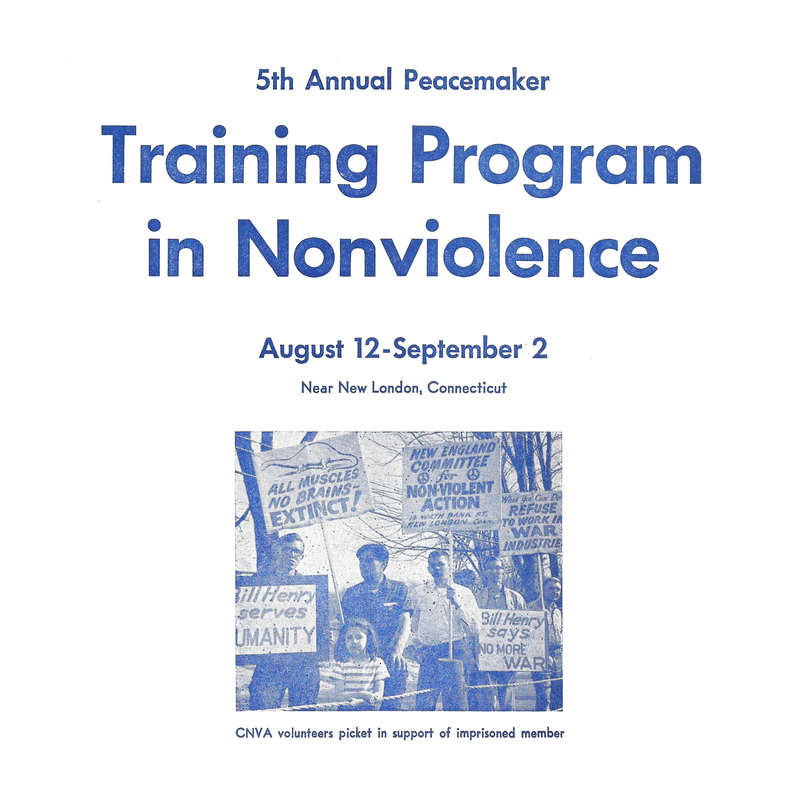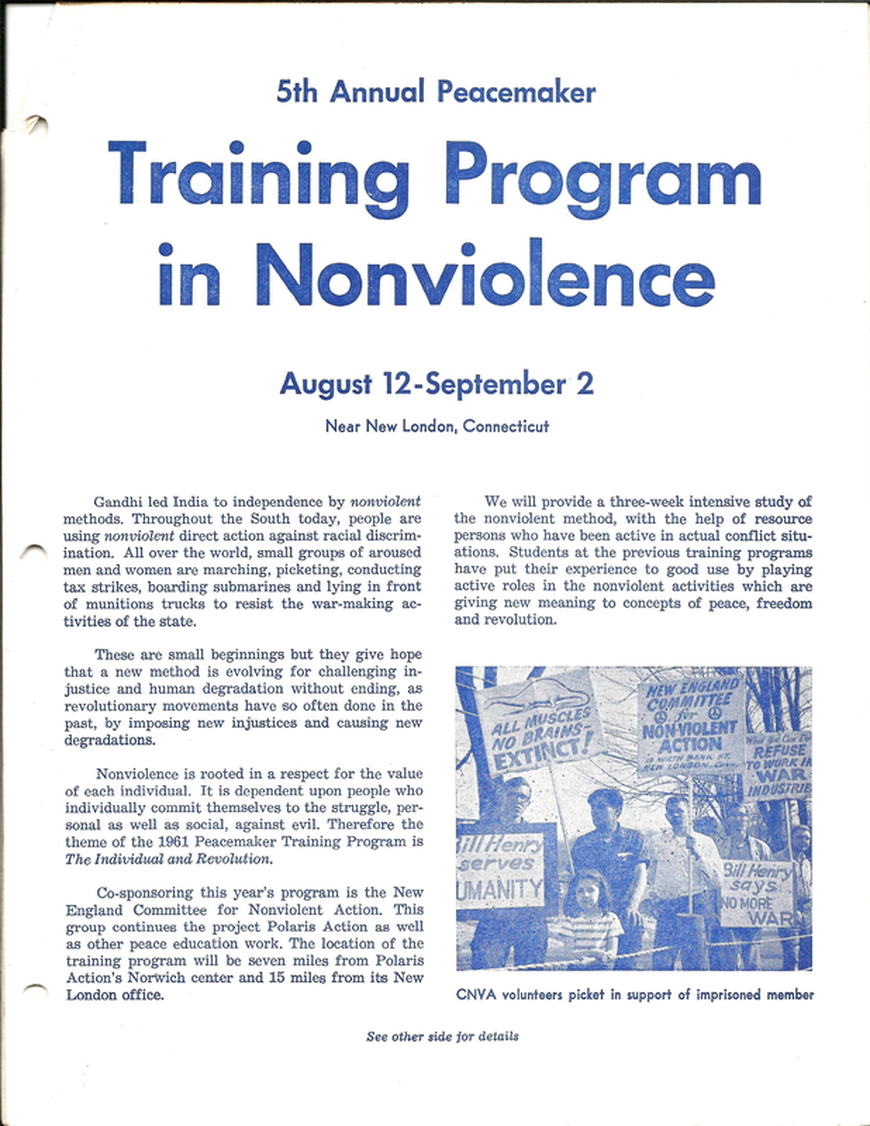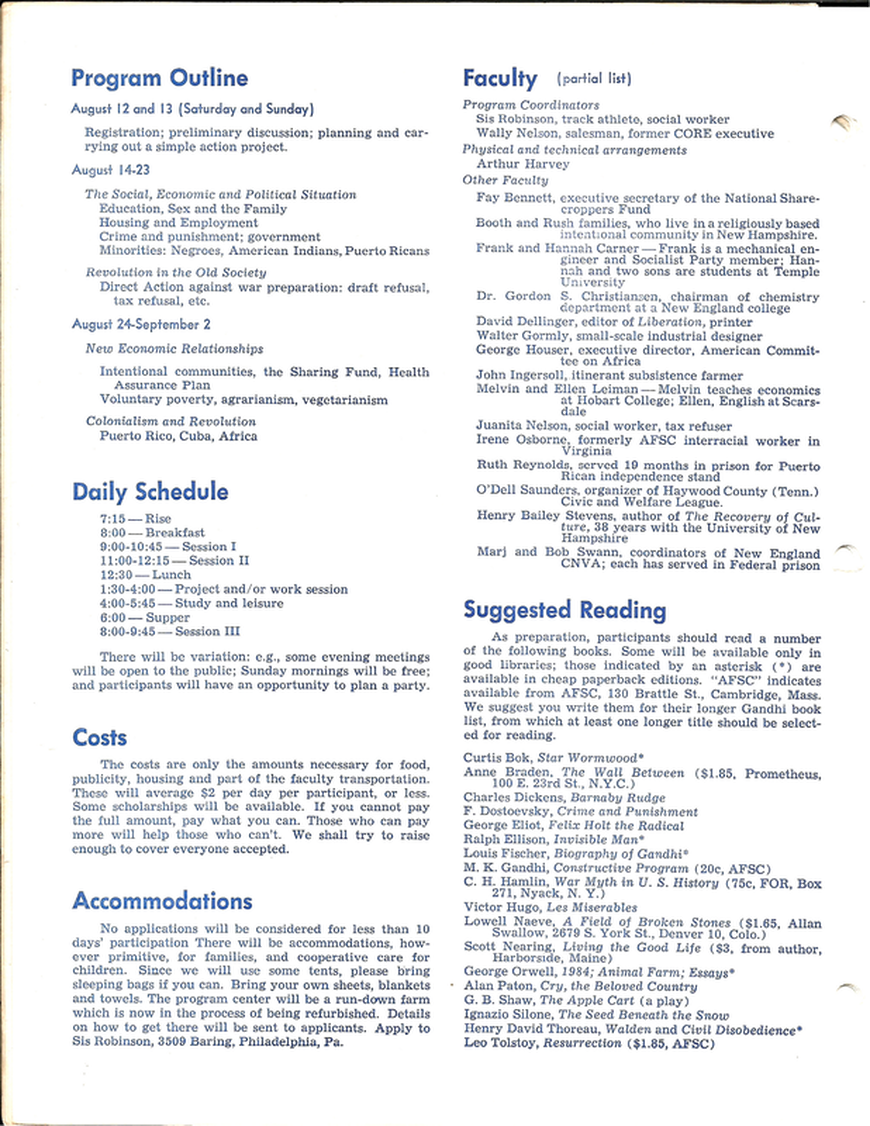|
In 1961, the Peacemakers came to southeastern Connecticut to hold their fifth annual summer intensive training. It was an easy choice: the world’s first nuclear-armed submarines were being built in the area’s General Dynamics - Electric Boat facility; the Committee for Nonviolent Action (CNVA) had established a New England chapter over the past year there to continue protesting the submarine manufacturing; and they had already held their 1960 training in the area the year before. As a collaboration between two of the most active antiwar groups committed to nonviolent action in the country at the time, the 1961 Peacemakers summer training program was planned to be intensive, comprehensive, hands-on, creative, diverse in identities, globally-minded, and locally focused. The theme of the 1961 program explored the dynamics and tensions between the individualist and collectivist values within the movement — a prescient topic that is still relevant today. Indeed, the Peacemakers were in many ways always ahead of their time. While the peace movement is sometimes accused of being a predominantly white movement, it is worth noting that both of the 1961 Program Coordinators for the Peacemakers were Black with decades of direct activist experience between them: Sis Robinson and Wally Nelson. The program itself also called for a diverse mix of people to join: professors and writers, farmers and industrial workers, activists and organizers, folks from all walks of life. The program staff was composed of a similar mix of people, including local Connecticut College professor Dr. Gordon Christiansen and New England CNVA members Marj and Bob Swann. The first half of the program was to cover the Peacemakers’ antiwar analysis of the Cold War and how they could resist militarism even under such circumstances — topics that one might expect. But the second half of the program was to include topics that went much further: building the new world in the shell of the old, changing behaviors for a better society, even possibilities for revolution. As hinted earlier, the Peacemakers were not simply activists of their own time — they anticipated a mature, worldwide movement of nonviolent resistance to develop in the future. After all, Gandhi had nonviolently led India to liberation less than two decades earlier, Black civil rights leaders had been using similar strategies in the American South for years, and new forms of protest and direct action were being pioneered all over. This strong commitment to a revolutionary peace movement can be glimpsed in the radical topics to be explored, in the diverse membership of the two participating organizations, and in the highly structured daily schedule for the summer program. This wasn’t just learning; this was training. (Click the images below to download the PDF version of the original clipping) --
Take Action The CT Committee for the Prohibition of Nuclear Weapons organizes pro-disarmament demonstrations throughout the year. To participate in these demonstrations against nuclear arms and in support of the UN’s Treaty on the Prohibition of Nuclear Weapons, please get in touch with us on Facebook at facebook.com/voluntownpeacetrust or email us at [email protected]. — Support Us If you like our weekly posts, please consider supporting this project with a one-time or recurring donation. Contributions of all sizes are appreciated. Click this link to learn more about what we do and how you can donate: https://www.mightycause.com/organization/Voluntown-Peace-Trust — Source “5th Annual Peacemaker Training Program in Nonviolence.” Polaris Action Bulletin. 25 May 1961 (Bulletin #23), page 4. Comments are closed.
|
AuthorWrite something about yourself. No need to be fancy, just an overview. Archives
March 2023
Categories |



 RSS Feed
RSS Feed